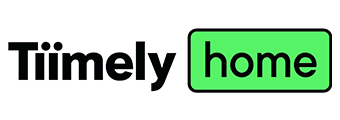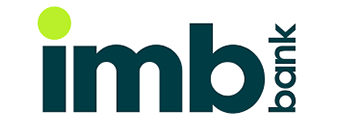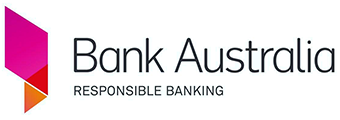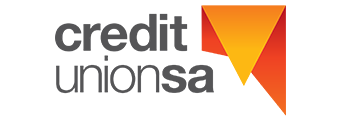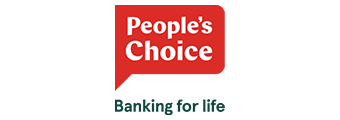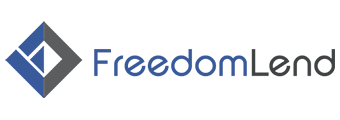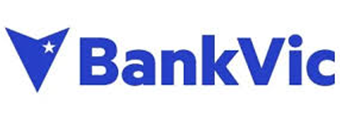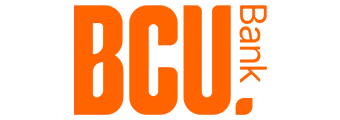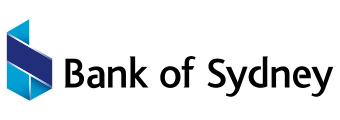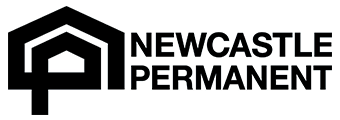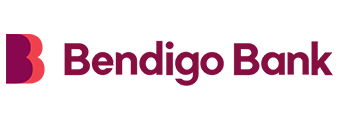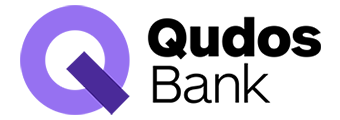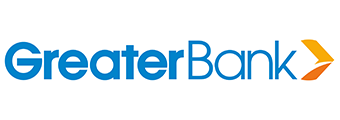InfoChoice’s variable rate comparison table breaks down the features, rates and fees of different variable home loans from a range of lenders. Borrowers should pay attention to the comparison rate, which combines the advertised interest rate with any fees and charges, so you can estimate the average total cost of each loan.
What are the two main types of variable home loans?
The two main types of variable home loans are the basic variable home loan and the standard variable home loan.
What is a basic variable home loan?
A basic variable home loan usually is a no frills home loan option, offering less features than other loans. The upside is it offers a lower interest rate and mortgage fees.
The interest rate is still a variable rate, so it may fluctuate, however lenders will usually offer a lower rate than the standard variable rate.
How to compare basic variable home loans
There are several aspects you should examine when comparing basic variable home loans. It would be a mistake to simply make a decision according to interest rates.
Here are a few aspects to consider:
- Comparison rates: Always request to see the comparison rates for any basic variable mortgage you’re considering. It shows you exactly how much the loan will cost you.
- Set-up fees: You will need to pay all sorts of fees when setting up your home loan such as establishment fees, application fees, valuation fees, documentation fees, legal fees, settlement fees, and any ongoing monthly fees are common among most loans.
- Redraw limitations: Always check what restrictions apply. Some lenders have limitations on how much and how often you can redraw on your home loan. They might also charge a fee each time you access the redraw facility.
Advantages
There are several advantages to taking out a variable rate home loan. These are:
- Cheap interest rate
- Low or no ongoing fees
- Option to choose interest-only repayments
- Additional repayments can be made without penalty.
Of course there are also disadvantages:
Disadvantages
- Variable interest rate is subject to fluctuations
- Increased repayments if interest rates rise
- Redraw facility can be subject to limitations, including minimum withdrawal amounts and redraw fees.
What is a standard variable home loan?
A standard variable home loan usually offers more features than the basic variable home loan. These added features will mean that you may have higher fees and charges than that of a basic account.
The interest rate is still a variable rate, so it may fluctuate and lenders will usually charge a higher interest rate than that of the basic loan.
How to compare standard variable home loans
There are many elements to look at when comparing standard variable home loans. Here are a few aspects to consider:
- Comparison rates: As per the basic variable loan, always request to see the comparison rates for any basic variable mortgage you’re considering. It shows you exactly how much the loan will cost you.
- Set-up and ongoing fees: Set up fees and ongoing fees are part and parcel of standard variable home loan. Compare set up fees such as establishment fees, application fees, valuation fees, documentation fees, legal fees and settlement fees. Once you have done this, look into what ongoing fees you may be charged such as annual and monthly service fees.
- Redraw limitations: Standard variable home loans come with less redraw restrictions than a basic loan. Always check with your lender to establish exactly how often and how much they will allow.
What other types of variable home loans are there?
There are several different types of variable loans further to the Basic and Standard loans, each with different features.
Options for the varying types of variable rate home loans include:
Introductory rate home loan
This is when you receive a low variable rate for a promotional period of time. This could last anywhere between one to three years. Once this introductory period ends, your interest rate reverts to the loan’s standard variable rate. Always find out what this rate is before signing up.
Full feature loan
A full feature loan has all the bells and whistles. With this type of loan you will have access to features such as free redraw, an offset account and free extra repayments. You are likely to have to pay annual fees and certain charges on this loan, however it is worth it if you need (or even like) all the features it offers.
Variable rate package
For loans that are over $150,000, you may qualify for a packaged home loan. This is where the bank or lender provides you with a lower interest rate if your loan is bundled with other products like a credit card and bank account. Annual package fees usually apply with loans such as these.
Split rate loans
If you like the idea of the flexibility a variable home loan can offer, but are a little concerned about the risks, you could look into a split rate loan. With a split rate loan, your lender will charge a fixed rate of interest on a certain percentage of your loan, and a variable rate of interest on the remainder. This way, if rates increase, the only part of your loan that will rise is the portion that is variable. This leaves you with a small amount that you know will always stay the same.
What is a variable interest rate?
A variable interest rate, sometimes referred to as an adjustable or floating rate, is an interest rate that fluctuates according to the official cash rate. In Australia, the cash rate is set by the Reserve Bank of Australia.
If the interest rate drops, so too do your minimum monthly repayments. However, it can work the other way too: if the interest rate goes up, so does your repayments.
Benefits of a Variable rate
Variable-rates are generally lower which provides borrower with smaller repayments. This enables mortgage holders to save more money than they would on a fixed rate, or use the extra money saved as they please.
When an interest rate is reduced, this enables mortgage holders to continue paying the original, higher repayment amount. Paying the higher amount, but with a lower interest rate, means that extra money is drawn down from your principal (how much you borrowed when you first opened your home loan). This could help you pay off your home loan a lot quicker as you are paying more than the minimal monthly repayment.
Paying a higher amount than the variable rate requires, could also potentially reduce the total amount of interest you’ll pay over the lifetime of your loan. For instance if you have a $300,000 loan at a variable interest rate of 2.50 per cent and the interest rate drops to 2.30 per cent, but you continue to draw down the loan at the 2.50 per cent rate, you are likely to reduce the term of your mortgage.
Risks of having a variable rate
One of the greatest risks associated with a variable rate is the possibility of rate increases. If the RBA increases the official cash rate, it’s highly likely that your lender will pass this rate rise on to you therefore increasing the cost of your repayments.
You could suddenly find yourself in a position where you are unable to pay your newly increased minimum monthly repayments. Also, keep in mind that many lenders charge fees as well as interest on their home loans, which can make a big difference to your budget.
Are variable rates right for you?
Variable interest rates are provide an excellent home loan option, especially if you are unafraid of the associated risks and if you know you have extra money to put into your home loan or cover the increase in the worst case scenario – when rates increase.
Variable interest rates offer features that you don’t always find with a fixed rate such as offset accounts and redraw facilities.
These mortgage options are also highly appealing to property investors. If interest rates remain low, investors’ repayments remain affordable, allowing buyers to maximise the return on their investment.
Also, keep in mind that many lenders charge fees as well as interest on their home loans, which can make a big difference to your budget.
What should I look for in a variable rate?
The most obvious and important aspect to look at when considering a variable interest rate home loan is … the interest rate. A lower rate means lower repayments. Those considering a variable rate home loan, should also take the features of the loan into account.
If you have extra money available on a regular basis, you may want to make sure you have access to an offset account. However, if you don’t need this feature, you may be able to find a cheaper home loan.
Finally, you need to see what fees are charged with the particular loan you are considering. A home loan with an array of features, usually comes with higher fees and charges. Only look for the features you need in order to save on the overall cost of fees and charges.
Do variable interest rates change often?
A variable interest rate may change whenever your lender decides to alter it. However, the lender will usually act on the decisions made by the Reserve bank of Australia (RBA) to lower or raise the official cash rate. It should be noted, your lender can act independently of the RBA and won’t always cut their rates by the same amount as the RBA.
Lender may also decide to raise or lower interest rates for more macro reasons. These reasons can include:
- Increases to the cost of debt funding
- Regulatory changes, including increased restrictions on lending
- Shareholder pressure (shareholders always want bigger profits over profit or return on equity
- Decreased competition
What documentation do I need for a variable home loan?
When taking out a home loan, your bank or financial institution will want to know your background details and whether you can afford to make the repayments.
Here’s a list of what the bank will ask for when you apply for a variable rate home loan.Identification – All new home loan applications will require you to provide identification. Acceptable forms of ID are:
- Driver’s licence
- Passport
- Proof of age card
- Birth certificate
- Income verification
You’ll need to verify your income by supplying your two latest payslips and a PAYG (pay as you go) payment summary or a tax assessment notice. All other income will also need to be verified, such as Family Allowance payments, child support payments, dividend income or rental income.
If you’re self-employed, you will need to provide your two latest tax returns. The lender will also examine the following.
- Assets and liabilities. You will need to know the approximate values of your assets, including real estate, cars, amounts in savings accounts, and superannuation. You will also need to provide proof of any outstanding debts you may have such as credit card or car loans.
- Current expenses. All lenders will want to know what your current expenses are. You will need to know how much you pay each month on any outstanding loans, credit cards, store cards or any other debts you have as well as a list of household expenditure such as bills, groceries and entertainment.
How do repayments for variable interest rate mortgages work?
As with all mortgage repayments, you need to pay part of your variable interest rate home loan once a month. The following factors will help you determine how much that will be:
- How much you borrowed when you first opened your home loan. This is referred to as your principal.
- The length of your loan. A typical home loan is usually between 25-30 years.
- What’s the current standard market interest rate? Your repayments may increase and decrease with interest rate fluctuations with a variable rate home loan.
- Once you have worked these out, your repayment will be a portion of your principal and whatever interest is owing for that month.
Variable Rate Glossary of Terms
| Bridging finance | Short term home loans that help bridge the gap in time between financing the purchase of a new property, before you sell an existing property. |
|---|---|
| Cash rate | The cash rate is the interest rate set by the Reserve Bank of Australia (RBA). It is the interest that every bank has to pay on the money it borrows. |
| Comparison rate | Help borrowers determine the true cost of a loan. The comparison rate is calculated using a standard formula that includes the interest rate of the loan and associated (but not all) fees and charges relating to a loan. |
| Conditional approval | A document from your lender that states how much they’re likely to let you borrow based on a review of your financial situation, objectives and requirements, and it’s subject to terms and conditions. |
| Conveyancing | When a property is transferred (usually by a lawyer or licenced conveyancer) from one owner to the next. lawyer or licensed conveyancer to do this for you. The act of conveyancing ensures that all outstanding bills including water and rates, are paid up in full by the existing owner before a property is settled. |
| Discharge | When refinancing you will need to discharge the current loan, meaning removing your current lender’s name off your property title and replacing it with your new lender. |
| Equity | Your property’s market value minus what you owe on your home loan. |
| First Home Owner Grant (FHOG) | A government grant that helps first home buyers pay for the costs the purchase of their first home. |
| Fixed interest rate | An interest rate that stays the same for a set period. |
| Guarantor | A person, usually a relative, who agrees to provide their property as security for your home loan. |
| Home loan increase | Increase the limit on your existing home loan. |
| Interest only | If you are struggling to pay your mortgage, your bank or lender may offer an interest only period, where your mortgage repayments are limited to just the interest for an agreed period of time. |
| Lenders Mortgage Insurance (LMI) | LMI is insurance to protect your lender if you have trouble with your mortgage repayments. This is sometimes paid as an additional upfront cost to your home loan. The LMI amount usually depends on the amount of deposit you have. Anythiung over a 20 per cent deposit, will avoid LMI. |
| Loan to value ratio (LVR) | The total percentage of your property value that you’ve borrowed. The average home loan in Australia is $400,000, so if you paid $320,000, your LVR is 80%. |
| Offset account | Offset accounts ensure the balance in your offset account is ‘offset’ against the amount you owe on your home loan. This is a valuable feature of any home loan as the interest you pay is calculated on the reduced amount. |
| Principal and interest repayments | The loan amount (the principal) and the interest on the loan make up your home loan. |
| Refinancing | When you moving your home loan to a different lender. |
| Redraw | A feature of your variable home loan that enables you to make extra mortgage repayments and withdraw them when you need to. |
| Repayment holiday | If your loan is in surplus, the bank may offer you a repayment holiday, whereby you can take a break from making your scheduled mortgage repayments. |
| Reserve Bank of Australia (RBA) | The RBA is Australia's central bank and sets the nation's monetary policy. |
| Settlement | When the seller legally transfers ownership of a property to the buyer. |
| Split loan | When one portion of a home loan is on a fixed rate and the other is variable rate. |
| Standard variable rate | The standard variable rate (SVR) is the standard home loan rate charged by the lender. This is a benchmark rate from which other variable products are priced. |
| Unconditional approval | Your lender has approved your full home loan application. You now have the money to take out your variable rate home loan. |
| Variable interest rate | An interest rate that can fluctuate up and down over time, meaning your repayments can change at any time. |




